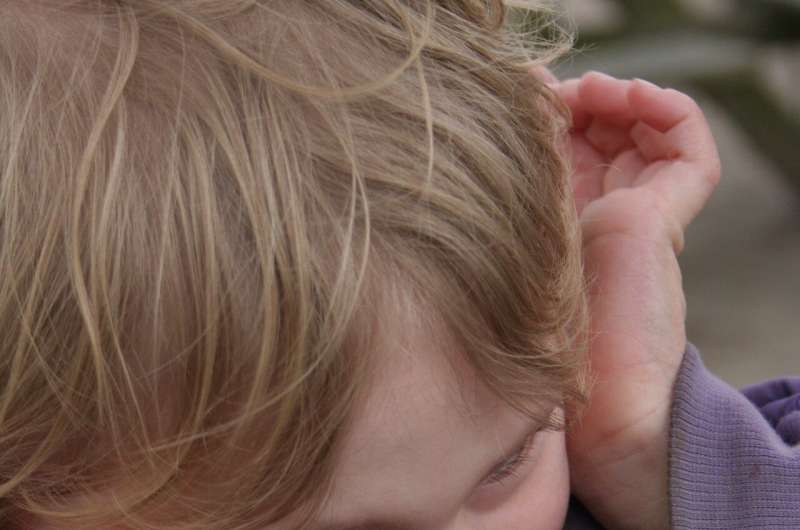
A number of news media reports have detailed physical or even sexual assaults by children with autism or intellectual disabilities. In some cases, the victims have suffered serious head injuries.
At the same time, parents of children with intellectual disabilities have spoken of their feelings of distress and helplessness when their child goes into a meltdown.
While “neurotypical” children can also be prone to aggressive behavior, it seems to be more frequent and intense in young people with neurodevelopmental disorders.
What triggers it? Is aggressive behavior really on the rise in children with autism? What can be done to prevent it?
Two autism specialists at Université de Montréal offer some answers—as well as solutions.
‘A child trying to communicate’
“Behind every behavior, whether or not it’s appropriate or dangerous, there’s a child trying to communicate a legitimate need as best they can,” said Dr. Alexis Beauchamp-Châtel, an assistant professor in UdeM’s Department of Psychiatry and Addiction and psychiatrist at the UdeM-affiliated Center de recherche de l’IUSMM.
“And in children with autism, meltdowns and aggressive behavior always serve a function,” he said. “They are trying to communicate something: a want, a refusal, a difficulty in understanding, a request for help, sensory overload, an emotion.”
“‘Challenging’ behaviors are mostly a means of communication: they occur when the child has no other way to get what they want or avoid what they don’t want,” added Marc Lanovaz, a professor at UdeM’s School of Psychoeducation. “We avoid calling it violence, which has a very negative connotation.”
Outbursts are the tip of the iceberg, the professors said, they’re signs of distress that signal the child’s inability to express their needs, make themselves understood, or understand others.
Formulating a hypothesis
What to do? A functional assessment is a good place to start, the experts agree: it can help identify the purpose that the challenging behavior serves. It’s important to analyze the events that led up to an episode and the response to the behavior, and then compile a good number of episodes to formulate a hypothesis about the cause. Once what triggers the behavior is identified, solutions can be found.
“For example, if you notice your child’s behavior becomes disruptive when they need to walk down a noisy hallway to get to class, noise-cancelling headphones may be the answer,” Beauchamp-Châtel suggested. “If your non-verbal child gets frustrated because they have difficulty communicating, you can try signing or giving them pictograms, assistive apps, and other objects.”
Lanovaz and Beauchamp-Châtel both stressed the importance of early intervention to help prevent aggressive behaviors from escalating. It’s easier to manage a child of 3 or 4 years old who hits you than a 15-year-old who does.
“Behaviors become increasingly ingrained as the child ages,” Beauchamp-Châtel added. “The framework must be established at an early age.”
No upsurge in recent years
Media reports of incidents in both regular and special-education schools may give the impression that there has been an upsurge in aggressive behavior among young people with autism in recent years.
Lanovaz firmly rejects this: it’s no more prevalent now than when he started working in the field over 20 years ago. “Nonetheless, extremely long waiting lists that prevent children from getting specialized help as quickly and early as they need can exacerbate the problem,” he added.
“Consistency is another key to successful treatment. But schools are facing high turnover and a shortage of specialized staff. People are doing their best given the circumstances, but problems that could have been solved with a few months of systematic intervention persist.”
There are also systemic barriers, said Beauchamp-Châtel, including gaps in access to services and a lack of health care professionals who can help with a functional analysis. He noted that this is one of the core issues in the current negotiations between Quebec’s public-sector unions and the government.
Web and smartphone apps
Part of Lanovaz’s research involves finding ways to improve clinical decision-making and facilitate assessment and treatment for parents, health professionals and educators. He is particularly interested in developing web and smartphone apps and exploiting the potential of artificial intelligence.
He recently launched an online platform called OpenIWT to help parents of children with developmental disabilities reduce difficult behaviors at home.
Lanovaz has also teamed up with La Fondation Autiste & majeur to develop a smartwatch app that helps spot early warning signs of challenging behavior. The app will detect potential outbursts by measuring physiological responses such as heart rate, temperature and thermal conductance.
The goal is to alert the relevant resource persons and head off meltdowns before they start. “Ideally,” Lanovaz said, “this tool could be used to improve clinical treatments and minimize the risk of injury to responders.”
Source: Read Full Article
